The Impact
Greek architecture has had perhaps the greatest impact on architecture in the entire world. The style has been adopted and repeated by cultures from all over the world that have been touched by the Greeks or even by those whom the Greeks interacted with.
Many styles of architecture in the western world have been directly carrying on what the Greeks and Romans (who were greatly inspired by the Greeks) created, and this has been a standard since the Renaissance. Buildings being made in the 21st century are still mimicking a style that was perfected in the 300s BC.
When Did Greek Architecture Begin?
Well, Greek architecture as we most usually view it comes from two periods of the ancient Greek civilization. Those two periods are the Hellenic period (900 BC to 323 BC) and the Hellenistic period (323 BC until around 146 BC when Greece was conquered by Rome, though some argue the Hellenistic period continued into the period of Roman occupation).
The reason why the Hellenic period began in 900 BC is because this is when culture re-emerged after the period known as the Greek Dark Age. The Greek Dark Age came at the end of the collapse of the Minoan and Mycenaean civilizations around 1100 BC.
Architecture during the Hellenic period really became prominent around 600 BC. But let’s take a look at what the Minoans and Mycenaeans were doing.
Pre-Hellenic Architecture
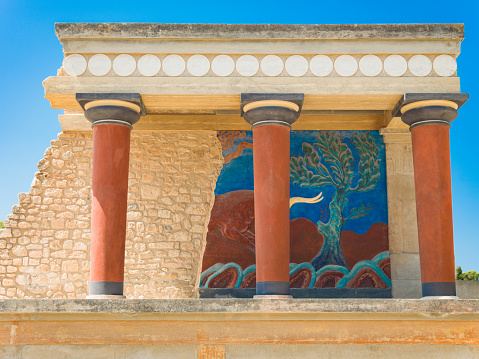
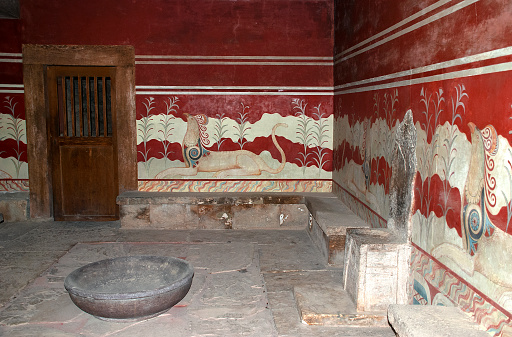
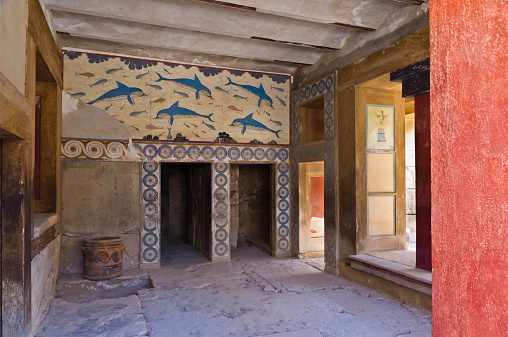
Pictured above are some remains of Knossos, which is one of the key features of Minoan architecture. The Minoans were not really Greeks, but they lived in Crete which is part of Greece today and has a history that is linked with the Greeks.
The Minoans were ruled by a man named Minos who was said to be the son of Zeus. Other famous figures from the Minoans included Daedalus who forged the Labyrinth, Icarus who flew too close to the sun, and the female hero Ariadne.
In addition to Minos being the son of Zeus, Crete is also said to be the island that Zeus was raised on. Which was necessary because Zeus needed to be hidden from his father, Cronus, who wanted to eat him.
The Minoan civilization started around 2100 BC and came to an end around 1100 BC. The reason why the Minoans went into decline is often attributed to a volcanic explosion that occurred on the island.
However the decline may actually have been because of Mycenaean invasions around the 1500s BC. See, the Mycenaeans were the actual Greeks and they came from the mainland peninsula.
According to what we know from Homer’s writings and from archaeological findings, the Mycenaeans took control of the Greek peninsula from the original inhabitants. The original inhabitants might have been some form of primitive mountain dwelling people, at least if the word of Nestor is to be believed.
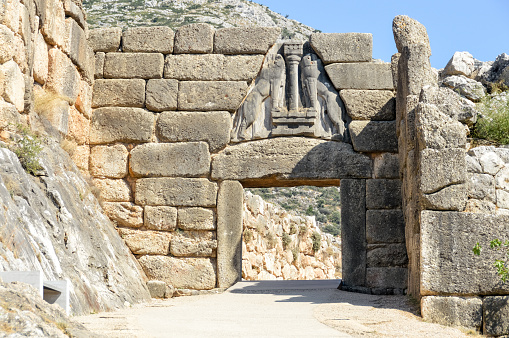
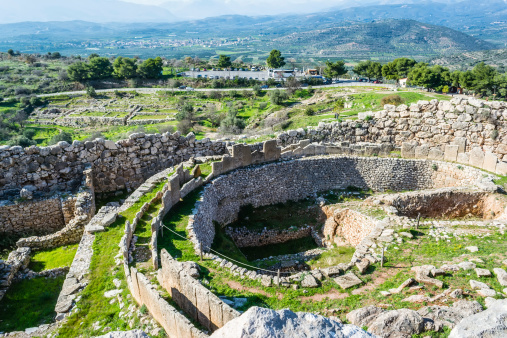
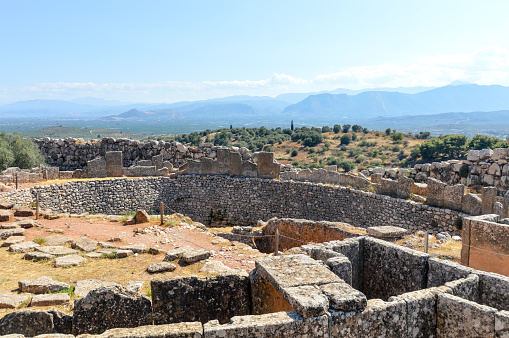
The Mycenaean Greeks also went into decline around 1100 BC like the Minoans, but not for the same reason. The Mycenaeans went into decline because of the Dorian invasion. The Dorians were a type of Greek that came from further inland and they migrated down, invaded, and overwhelmed the Mycenaean society.
However, before the Mycenaeans were through, they had a really important event occur: the Trojan War. The Trojan War was fought between the Greeks and the Trojans–who were kind of like Greeks–over the theft of the wife of the King of Sparta.
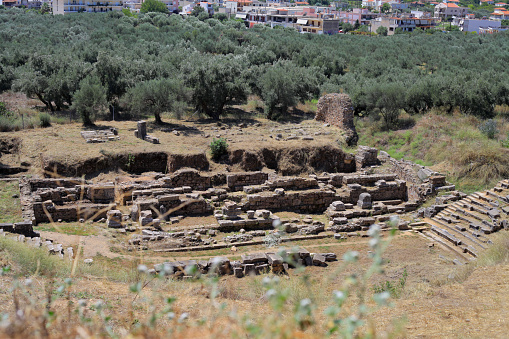

Mycenae, Sparta, and Troy were all dominant city states in the Aegean. And while Troy was not really totally Hellenic, it was similar enough and they worshiped Zeus as their patron deity.
Unfortunately for the Trojans, luck was not on their side and their city was destroyed. Some important Trojans such as Aeneas would escape the city, but for the most part they were over.
Though Mycenae would not last much longer, Sparta would. Sparta would go on to continue to be a prominent city state in the next age, the Hellenic period.
Hellenic Architecture
In 900 BC, the Hellenic age began and Greece began to form into the culture that we remember them for. Most Greek architecture is remembered for its temples.
While the Greeks have never really built their temples in the Egyptian style, we can see through the columns that the Greeks used in temples such as the temple of Hera that they incorporated Egyptian styles of aesthetic.
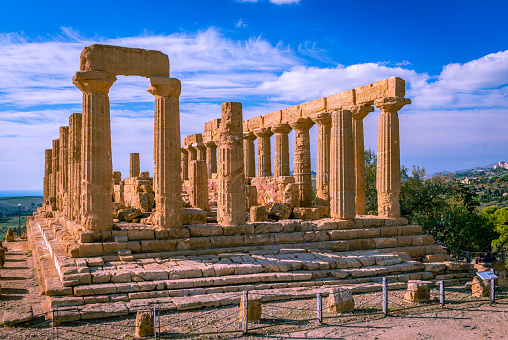
However, the Greeks quickly developed their own column styles. The Doric Columns, the Ionic Columns, and the Corinthian Columns.
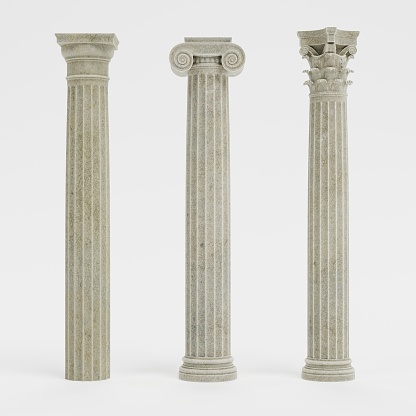
The columns were each named after a group of Greeks. Doric were named after the Dorian Greeks. Ionic were named after the Ionian Greeks. Corinthian were named after the Corinthians who lived in the city of Corinth, in Greece.
The Doric column is similar to the Egyptian style columns, but is an overall thinner structure in comparison. The Ionic and Corinthian columns are visually different.
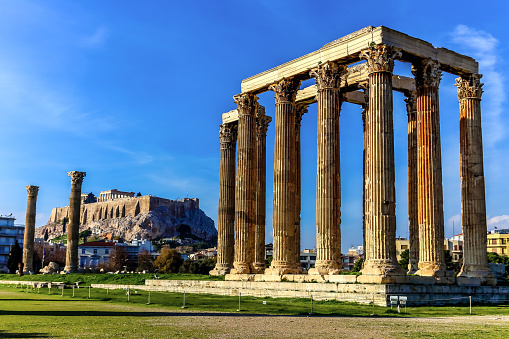
These ruins of the temple of Zeus found in Athens show the use of Corinthian columns. Temple building is the most common form of Ancient Greek architecture that we still remember today. Now we’ll look at some more temples,
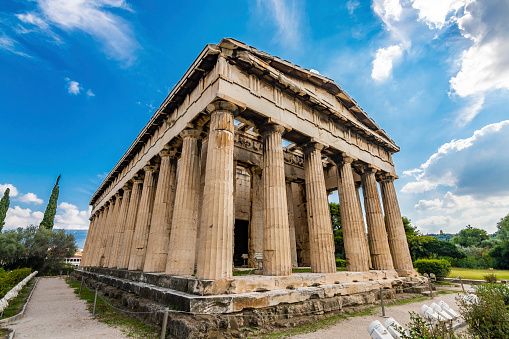
This one is still mostly intact, and it was a temple for Hephaestus–it uses Doric columns. Hephaestus was the Greek god of the forge and he was closely related to Athena because he is the one that helped birth her from Zeus’s forehead.
However, Hephaestus’s temple was not up near the Parthenon. The reason why has a mythological root which says that Hephaestus unsuccessfully attempted to rape Athena because he believed she was his soulmate.
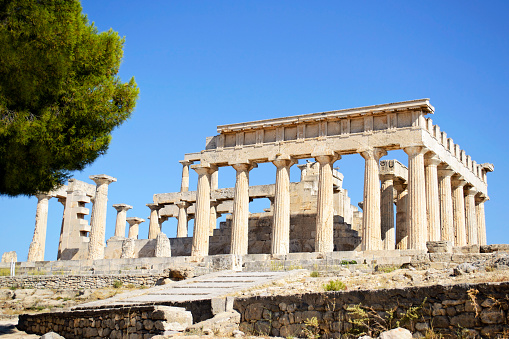
The Temple of Aphaia is a temple that came from around 500 BC and was built for a local fertility and agriculture goddess named Aphaia on the island of Aegina. Aphaia is believed to possibly be another name for Artemis. They use Doric columns on this temple as well.

Pictured above is the Parthenon, which is a temple that is in Athens and was made for Athena. The Parthenon is basically the pinnacle of Greek architecture and was one of the most perfect buildings ever created.
It may be hard to tell, but the Parthenon actually curves! The Parthenon curves because the Greeks made it so that it would appear to the eye without any distortions at all.
The Parthenon also matches up with the Golden Mean, which is a mathematical design that is alleged to be naturally pleasing to the human eye. We have found ancient Greek measurement systems that have detailed to us that they used the human body to attempt to find these perfect measurements.
The Parthenon was built with a giant golden and ivory statue of Athena. However, this statue was destroyed in order to use it to acquire money to pay for a war.
The Parthenon suffered damage because at one point it was under attack during the Roman conquest of Greece. Later the Parthenon suffered even more damage because of Christians turning it into a church.
The Parthenon was then turned away from a church and into a mosque. Then it was turned away from a mosque and back into a church.
After that, the Parthenon was abandoned and left with all of those damages. The roof of the Parthenon was blown off because at one point it was used to store gunpowder and then was accidentally set off during a war that reached Athens a few hundred years ago.
Today there are groups who are attempting to rebuild the Parthenon, but they are facing limited success because the British won’t return the pieces of it that they have at the British Museum.
Besides the temples, one of the other most commonly remembered things from the Ancient Greeks are the theaters. Here is the theater of Dionysus:
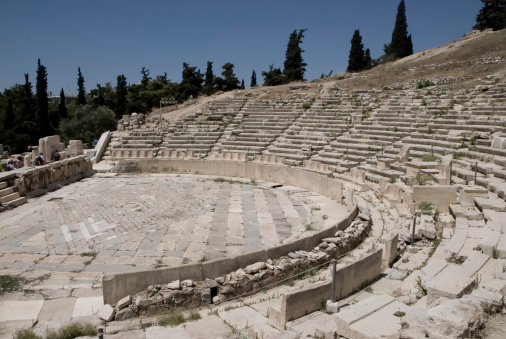
The theater was shaped like a half-circle and had seats that went around it and ascended up. Plays were performed here every year as part of celebrations for Dionysus.
The Greeks were responsible for developing theater itself here. We have preserved a few of the plays that the Greeks made, but many were unfortunately lost.
Aristotle attempted to write a book on plays but either did not finish it or the only thing that survived was the rough draft of the first half. We won’t really know for sure because most of Aristotle’s works were lost with the library of Alexandria.
Things Directly Based Off Of Greek Architecture

The USA’s Supreme Court Building, on the front, can be directly seen to resemble the Parthenon.
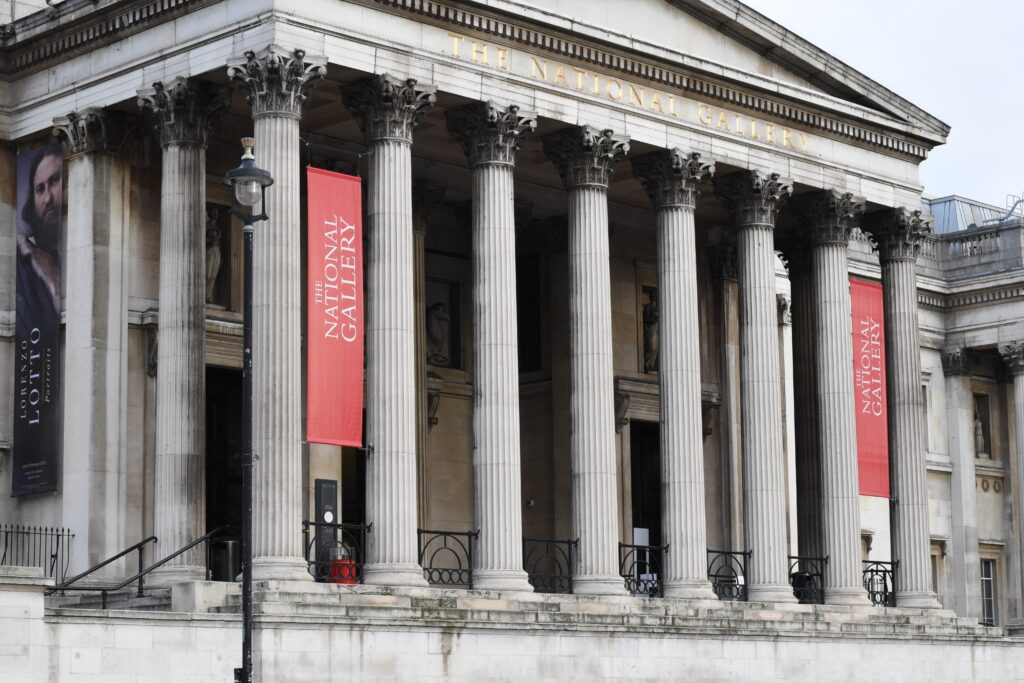
The front of the British Museum in London is also inspired by the Parthenon.
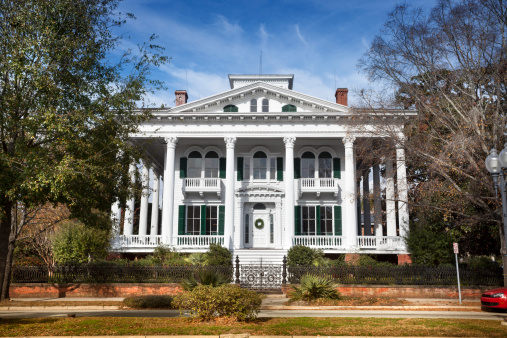
Here is an example of an antebellum mansion. As you can see, this mansion incorporates columns from the Greek styles as well as a bit of a similar structure to a Greek temple.
Antebellum architecture was part of a wider movement called Neoclassical architecture which sought to revive the building styles of the Greeks and the Romans. Neoclassical architecture was particularly popular in the United States and Britain but also spread to other places during the 19th century.
Hey there, I adore your blog! I really agree with your point as I work as a Landscape Designer Draftsman for an outsourcing company.